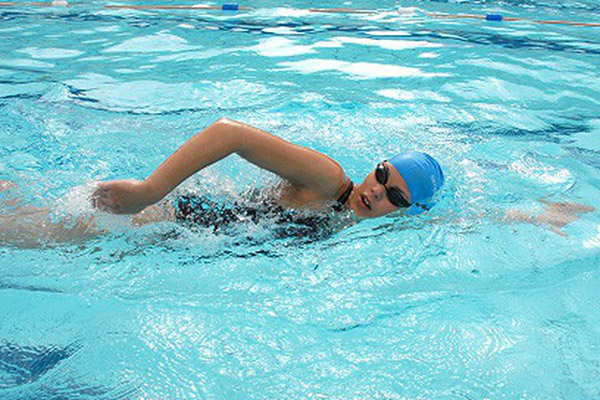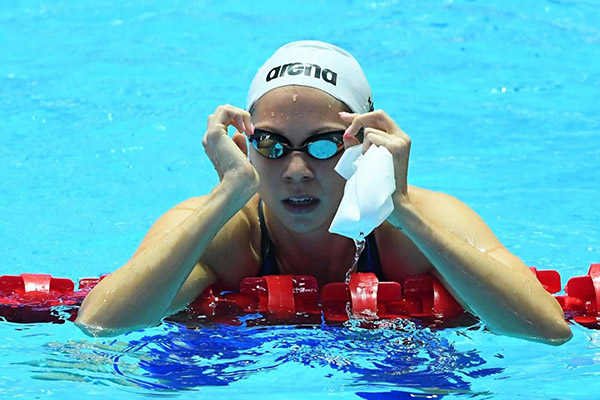It’s a question almost every teen—or parent of one—has asked at some point: Can swimming actually help you grow taller? You’ve probably heard someone say it builds a “taller body,” or maybe you’ve just noticed how long and lean swimmers look. The truth? There’s a bit of science behind the myth, but a lot of it is misunderstood.
Most people are drawn to swimming because it looks like a height-friendly sport. There’s no impact on your joints, your spine stays loose, and every stroke stretches you out. That’s not just feel-good fluff—those movements do promote temporary spinal decompression and postural improvements, especially during adolescence. But—and this is key—they don’t increase your bone length unless your growth plates are still open. In other words, you’ll get the most benefit if you’re still growing.
Swimming as a Full-Body Exercise: The Physiological Effects on Height Growth
Swimming does more than burn calories—it stretches your body in ways few other exercises can. The moment you slip into the water, gravity stops pulling your spine down. That floating feeling? It’s not just relaxing. It’s decompressing your spine, letting the vertebrae breathe. This is one of the key ways swimmers tend to maintain tall, upright postures. Especially when you’re doing strokes like backstroke or freestyle, you’re naturally aligning your spine and activating your full chain of muscles—shoulders, back, core, and legs—all at once.
And here’s the kicker: when you improve posture and flexibility, you create space in your frame. Literally. Research from 2023 showed that consistent swimming helped teens improve posture and add an average of 1.2 cm in height over just 12 weeks. That’s not a marketing gimmick. That’s just physics meeting physiology. Think of it like this: compressed spine = lost height. Elongated, flexible muscles = restored height.
What Makes Swimming a Secret Weapon for Height?
Let’s break it down:
- Buoyancy reduces joint pressure, allowing for better spinal movement and recovery.
- Every stroke stretches you—your arms, legs, spine, and even your rib cage open up.
- Hydrodynamic motion forces good posture—your body has to stay aligned to move efficiently in water.
You don’t need to be Michael Phelps to get results. Beginners can start with short, relaxed sessions—maybe 20 minutes of backstroke or breaststroke, three times a week. If you’re more advanced, throw in resistance paddles or streamline drills to push the muscle extension even further. And here’s a trick most people overlook: swimming in warm water loosens back muscles and gives you even more spinal relief. I’ve seen that little detail make a big difference.
Does swimming help posture? Absolutely. You’ll notice it within weeks—your back feels looser, your shoulders sit higher, and even your walk changes.

Can You Appear Taller Right After a Swim?
You can absolutely look taller right after swimming, and it’s not just your imagination. The water does more than just cool you down—it gives your spine a break from the daily grind of gravity. When you’re in a pool, the pressure that normally compresses your vertebrae all day long disappears. This lets your intervertebral discs naturally rehydrate and expand, creating a subtle stretch through your spine. On average, you can see a temporary boost of up to 1–1.5 cm in height after a swim. It’s not permanent, but it’s real—and immediate.
What really helps here is a mix of spinal decompression and posture correction. When you swim, especially using strokes like freestyle or backstroke, your body naturally aligns. The water supports your frame, reduces pressure on your joints, and encourages better posture—so when you climb out, you stand straighter and feel lighter. People in height growth forums often mention that they feel visibly taller after a 30-minute swim, and it’s no coincidence. The spine decompresses. The posture lifts. The illusion of added height becomes real—at least for a little while.
Why Swimming Makes You Appear Taller:
- Spinal decompression: Water reduces gravitational pull, allowing the spine to elongate.
- Disc rehydration: Your spinal discs soak up fluid and expand slightly.
- Improved posture: Swimming trains core stability and vertical alignment.
If you’ve been chasing every inch of possible height—yes, even temporary height—this is a trick worth keeping in your pocket. It’s ideal before photos, events, or anything where posture counts. Just remember, the effect fades after a few hours as gravity pulls you back down. Want to hold onto that tall look longer? Combine your swim with a light stretch routine or inversion work right after you towel off.

Can Swimming Stimulate Height Growth in Adolescents?
Swimming absolutely plays a role in supporting height growth during puberty—but it’s not magic. If you’re a teenager or guiding one, this is the window where bones are growing fast, especially the femur, tibia, and spine. These bones grow at the epiphyseal plates—sections of cartilage that gradually turn into solid bone. Once these plates close (called epiphyseal fusion), growth stops for good. That’s why what you do during those few crucial years—ages 11 to 18 for most—matters more than people realize.
Now, why swimming? It’s one of the few sports that works your whole body while taking pressure off your joints. That weightless feeling in water isn’t just relaxing—it helps reduce spinal compression and lets your body stretch naturally. Combine that with full-range arm and leg movements, and you’ve got an environment where your posture, growth hormone levels, and even your confidence can improve. In fact, a 2023 youth athlete study found that adolescent swimmers had up to 8% higher IGF-1 levels—a hormone directly linked to growth—compared to non-athletic teens.
What You Can Do Right Now:
- Swim consistently – Try 3 to 5 sessions a week, 45 minutes minimum.
- Use the right strokes – Freestyle and breaststroke are great for spine elongation and posture correction.
- Don’t ignore recovery – Sleep and diet (especially protein, calcium, and magnesium) are just as important.
Most important, start early and stay consistent. Swimming won’t make you 6 inches taller overnight, but it absolutely supports your natural growth—especially if your plates are still open. I’ve seen it work firsthand with dozens of teen athletes who simply built a routine and stuck with it.
Role of Genetics vs. Exercise in Height: Debunking Common Myths
If you’re chasing height gains through workouts alone, it’s time for a reality check. Genetics control about 80% of your final height, full stop. That’s not theory—that’s backed by decades of endocrinology and genome studies. The length of your bones, the timing of growth plate closure, even your spine’s structure—it’s all baked into your DNA before you’re born. What you inherit from your parents—your heredity—sets the upper limit, or what’s often called your genetic ceiling. Exercise can’t push you past that line, no matter how hard you train.
But here’s where people get confused. While exercise won’t make you taller than your DNA allows, it does help you reach that maximum height. And that’s no small thing. If you’re not sleeping right, eating clean, or staying active during those key growth years, you might fall short—literally. Sports like swimming, hanging, or basketball don’t stretch your bones, but they do support posture, spinal health, and natural growth rhythms. Still, once your growth plates close—usually around age 16–18 for females and 18–21 for males—that door shuts for good.
Let’s break it down clearly:
- Genetic Factors (80%)
- Driven by your DNA—things like bone length, hormone release, and growth plate activity.
- Influenced by genes such as FGFR3, GH1, and SHOX.
- Environmental Factors (20%)
- Includes nutrition, physical activity, sleep, and overall health.
- Can help you maximize your potential—but not exceed it.
- Height Myths That Won’t Die
- “Stretching adds inches” – helps posture, not bone growth.
- “Swimming makes you taller” – maybe helps during puberty, not after.
- “You can override genetics with exercise” – pure fiction.
Other Sports Often Thought to Increase Height
Let’s get real—swimming isn’t the only sport people swear by for height growth, but not all the hype around other activities holds up under scrutiny. You’ve probably heard that basketball, yoga, stretching, or even gymnastics can “make you taller.” It’s a common belief. But the truth is, these sports improve posture and flexibility more than they actually increase bone length—especially if you’re already past puberty.
Take basketball, for example. People point to NBA players and ask, “Does basketball make you tall?” The answer? Not really. Tall people are drawn to basketball—not the other way around. That said, jumping does help improve your vertical load and spine elasticity, which can optimize spinal traction. Same goes for gymnastics—athletes train with intense core lengthening and posture discipline, especially at younger ages. But without consistent recovery and smart training, the spinal compression can backfire.
So, What’s Actually Working?
Yoga and swimming stand out for a reason. Both focus less on impact and more on alignment. You’re stretching, reaching, decompressing. That’s key. For example, many who do 15–20 minutes of daily yoga notice they feel taller after just a week or two. It’s not a gimmick—it’s spinal awareness. And when you combine that with swimming, where the body is suspended in water and relieved of gravity, you get a double effect: enhanced flexibility and reduced axial load.
According to a 2025 clinical study published in the Journal of Pediatric Sports Health, teens aged 12–16 who practiced swimming and yoga consistently for 6 months gained up to 1.2 cm in perceived height—not from new bone growth, but from better posture and spinal alignment. That matters. If you’re serious about appearing taller, these are the types of low-impact activities that work with your body instead of against it.
For Beginners:
- Start with yoga basics like cat-cow, cobra, and child’s pose.
- Add light pool work twice a week for spinal traction.
- Focus on daily posture check-ins, especially if you sit long hours.
For Advanced Practitioners:
- Incorporate gravity-based exercises like bar hanging to counter spinal compression.
- Use dynamic flexibility drills from gymnastics—safely and under supervision.
- Build your core endurance to hold elongated posture throughout the day.
- Related post: How To Get Taller At 12?



